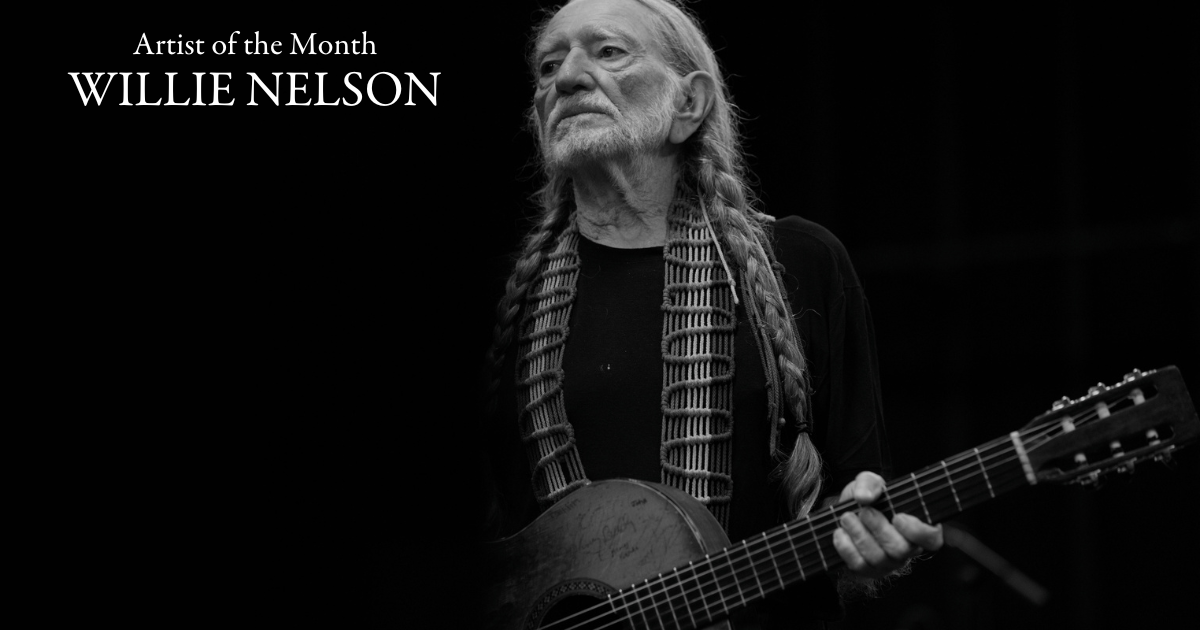Earlier this year legendary musician, songwriter and recording artist Willie Nelson announced his 151st studio album would be a return to bluegrass, this time reimagining 12 of his own originals with a string band lineup. Available September 15 and simply titled Bluegrass, the Buddy Cannon-produced project reinforces the career-long relationship Nelson has had with bluegrass and bluegrass pickers, calling on old friends and collaborators like Barry Bales, Ron Block and Dan Tyminski, as well as band members and vocalists Aubrey Haynie, Rob Ickes, Josh Martin, Mickey Raphael, Seth Taylor, Bobby Terry, Wyatt Beard and Melonie Cannon.
Nelson is a revered song interpreter and cross-genre adventurer, covering and recording songs from all across the American roots music landscape, from the Great American Songbook to blues and soul, from jazz to Texas swing. No corner of Americana in any/all of its forms has been left untouched by this prolific music maker. But his relationship to bluegrass – similar to his peers like Dolly Parton or Lee Ann Womack, or his acolytes and emulators like Sturgill Simpson and Kacey Musgraves – speaks to the primordial relationship between country and bluegrass, more than just musical touristing or a genre-based gimmick. Nelson doesn’t put on “bluegrass” as a costume, he brings it forward from the earliest days of country music as a genre, before sub-genres like bluegrass had stratified and coalesced as identities somewhat separate from country as a whole. It’s part of what makes Bluegrass a compelling collection, tracks like “Still Is Still Moving to Me,” the album’s lead single, don’t feel like songs wearing bluegrass drag, but rather feel like country gone back to its roots.
Across a career that has touched so many other musicians, singers, and creators – from Waylon Jennings to Ray Charles to Snoop Dogg – it follows that Nelson has counted many bluegrass greats among his album guests, track features, and show bills. He’s toured extensively with Alison Krauss & Union Station over the past two decades; it’s no surprise to find a handful of Union Station alumni on Bluegrass. He’s recorded with Rhonda Vincent, Billy Strings and all the McCoury boys, Del, Rob and Ronnie – the latter two have toured with Willie, too. Country Music, a 2010 release from Nelson produced by Americana superstar T Bone Burnett, was also a bluegrass-centered album, pulling from the deep and broad repertoire of early country, old-time and bluegrass – when the three genres could be represented by a Venn diagram of one circle.
There are so many facets of Nelson’s music making that feel patently bluegrass: his love of borderless, boundless cover songs; his ability as a picker standing equal with his songwriting and one-of-a-kind vocal interpretations; his endless output of personal, meaningful music; his mutual admiration of his compatriots, adorers and mentees. The list could go on ad infinitum. It makes perfect sense that this year he’ll join the father of bluegrass, Bill Monroe, in the Rock & Roll Hall of Fame.
It’s rare that a multi-hyphenate musician and songwriter such as Willie Nelson can shift so effortlessly between contexts, gathering and maintaining a diverse following that understands great music can – and should – transcend not only genre, but all of the trappings of the music industry. It’s part of why Bluegrass feels grounded, honest and resonant. Willie Nelson isn’t playing pretend, he’s just being himself – and that might be the most bluegrass thing about him.
Watch for our Artist of the Month feature, an in-depth exploration of Willie Nelson’s relationship with bluegrass across his life and career coming later this month, and enjoy our Essential Willie Nelson Playlist, featuring many of his bluegrass forays among his popular recordings and our BGS favorites.
Photo Credit: James Minchin


